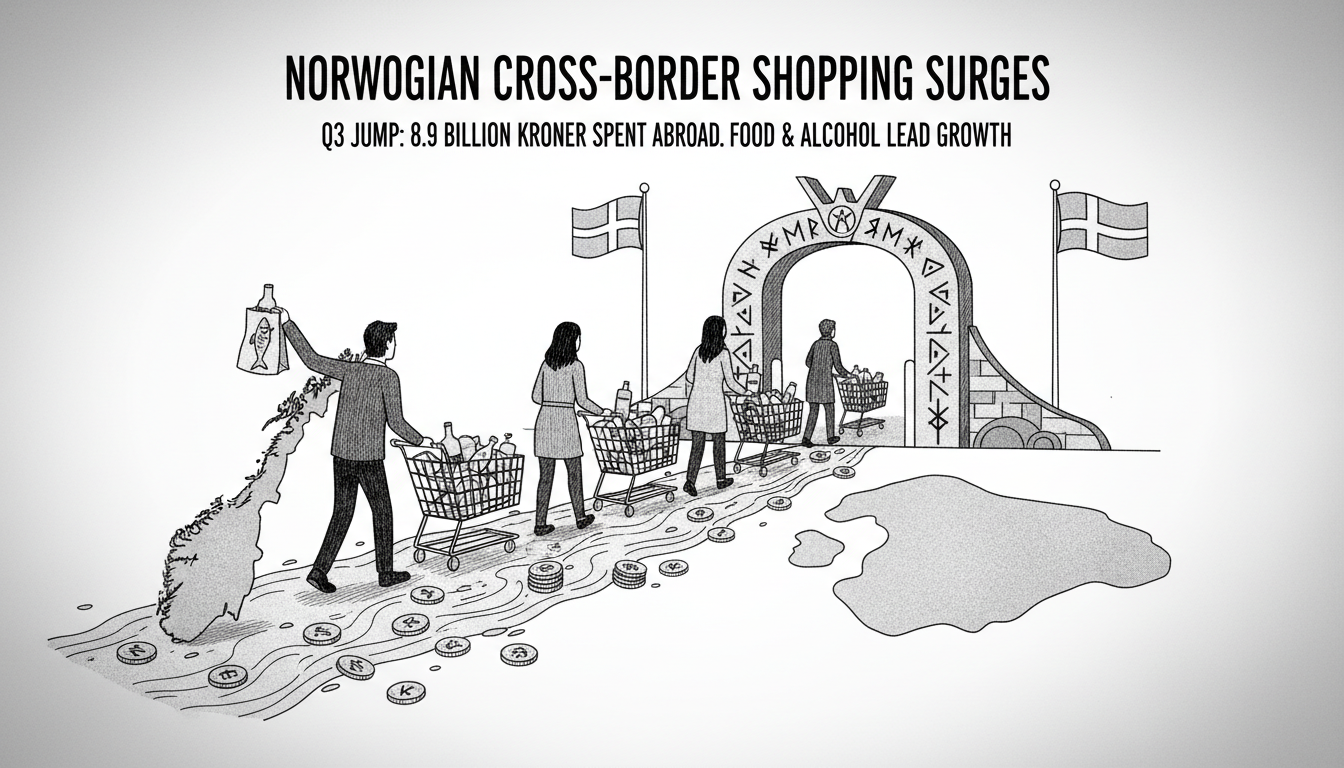Norwegian shoppers spent over 8.9 billion kroner on cross-border purchases from January through September. This represents an 11 percent increase compared to the same period last year. The growth amounts to 859 million kroner in additional spending.
Food and groceries dominate Norwegian shopping lists abroad. Consumers spent 3.5 billion kroner on these items during the first nine months. Alcohol purchases followed at 591 million kroner. Tobacco products accounted for 442 million kroner in cross-border spending.
Sweden remains the primary destination for Norwegian shoppers. The weakened Norwegian krone against the Swedish currency has made shopping more expensive. Price increases in Sweden have compounded the financial pressure.
"The Norwegian krone's weakness combined with rising Swedish prices means Norwegian money doesn't go as far as before," a Statistics Norway senior advisor explained in a statement.
This shopping trend reflects broader economic pressures facing Norwegian households. Despite Norway's strong economy, consumers increasingly seek better value across borders. The pattern shows no signs of slowing as inflation continues affecting purchasing power.
Cross-border shopping has long been a Norwegian tradition, particularly in regions near Sweden. Many families make regular trips to stock up on cheaper groceries and alcohol. The practice became even more popular after pandemic travel restrictions lifted.
Norwegian authorities monitor these shopping patterns closely. The revenue loss affects local businesses and tax collection. Some border communities have expressed concern about the impact on Norwegian retailers.
The currency situation presents a complex challenge. A weak krone typically benefits Norway's export-driven economy. Yet it simultaneously makes foreign goods more expensive for domestic consumers. This dual effect creates tension in economic policy decisions.
What does this mean for Norway's retail sector? Local stores must compete not only on price but also on convenience and service. Some retailers near the border have launched loyalty programs and special offers to retain customers.
The cross-border shopping trend also affects Sweden's border regions. Stores there have adapted to Norwegian preferences and shopping patterns. Many display prices in both currencies and accept Norwegian payment methods.
As winter approaches, shopping patterns may shift. Norwegians traditionally make larger purchases before holiday seasons. The final quarter numbers will reveal whether this growth trend continues.

